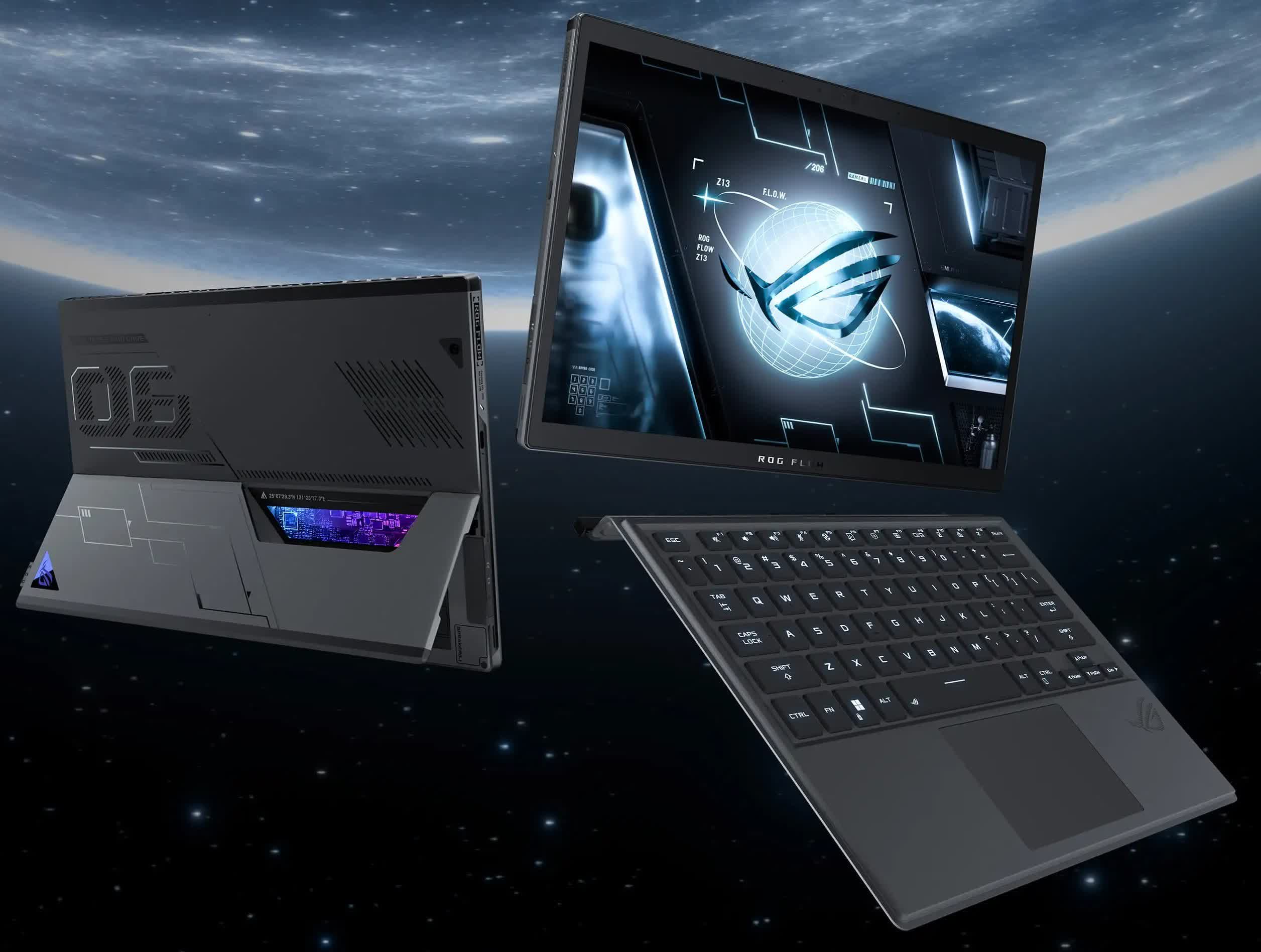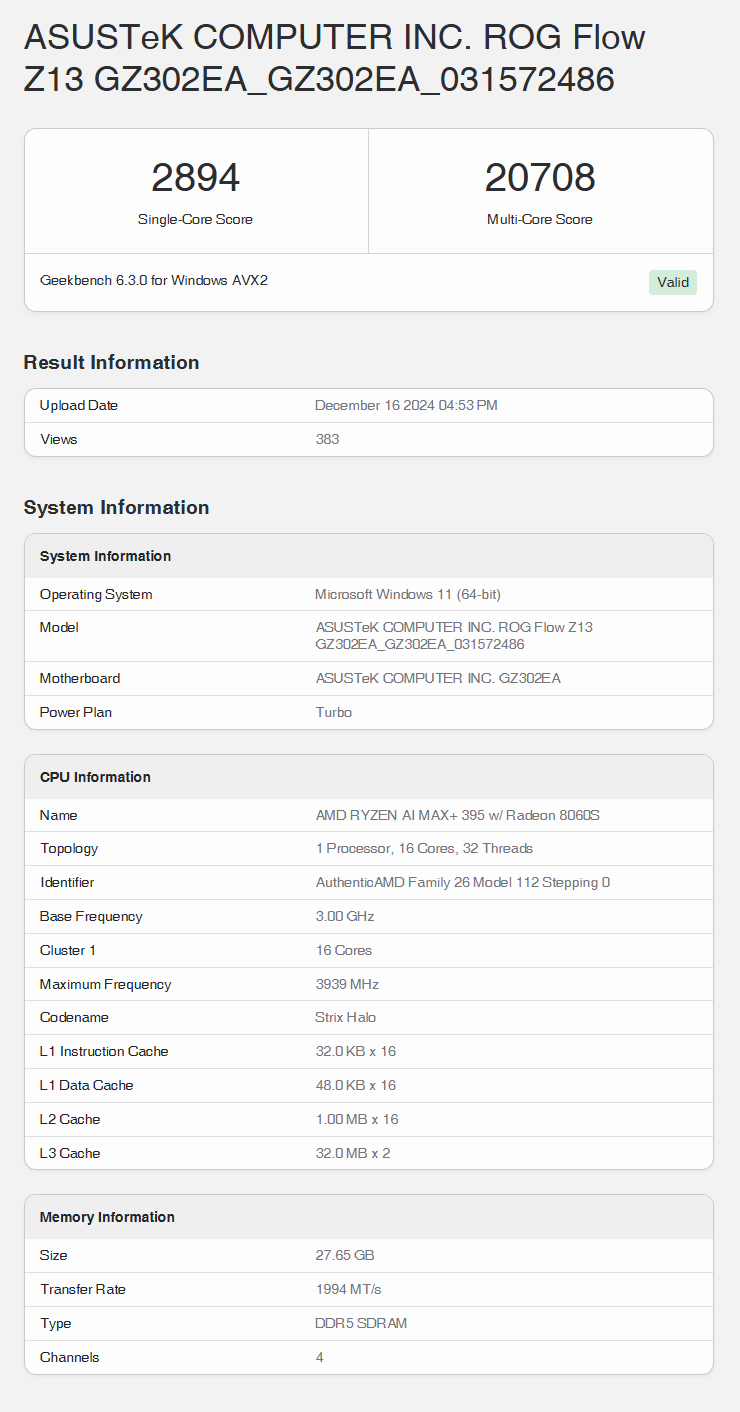In brief: Reports have long indicated that AMD is developing a super-sized spin-off of its upcoming Strix Point APU series. Details have been scarce until recently, but a new leaked benchmark confirms a prior report suggesting that Asus's upcoming gaming 2-in-1 will feature the high-end APU.

A recent Geekbench entry has revealed that the 2025 edition of the Asus ROG Flow Z13 hybrid laptop will include a Ryzen AI Max APU, also known as Strix Halo. AMD is expected to unveil the new flagship laptop processor and other products at CES in January.
The new Asus device features the most powerful configuration from AMD's upcoming Ryzen Max series: the Max+ 395 with a Radeon 8060S integrated GPU. With a clock speed of 3GHz, the 16-core, 32-thread APU posted a 2,894 single-core score and a 20,708 multi-core score, comparing favorably against prior Z13 models featuring high-end Alder Lake and Raptor Lake CPUs.
Meanwhile, the new device's 76,961 OpenCL GPU score closely resembles laptops featuring mobile RTX 4050 and 4060 dedicated GPUs. A Vulkan benchmark from a test model earlier this month posted a similarly impressive result.
Click to enlarge
Ryzen AI Max is a high-end counterpart to AMD's Ryzen AI 300 series, which is set to power a new generation of laptops and handheld gaming consoles. While the Ryzen AI 9 370, expected to serve as the basis for the Z2 Extreme handheld gaming processor, features 12 RDNA 3.5 compute units, the Ryzen AI Max+ 395 boosts the number to 40.
The new ROG Flow Z13 initially appeared in a design profile leak in August when a leaker claimed that the CPU would draw up to 30W and the iGPU up to 80W, necessitating an overhaul of the cooling system. AMD is also expected to introduce lower-tier Ryzen AI Max chips such as the Max 385 and Max 380 at CES.
Furthermore, RDNA 4 will likely make its first official appearance at the trade show, competing with Nvidia's upcoming RTX 5000 series and Intel's new Arc Battlemage. RDNA 4 aims to dramatically enhance ray tracing performance over RDNA 3 and mark AMD's first implementation of AI-based upscaling.
Meanwhile, rumors and leaks have indicated that Intel is developing a response to Strix Halo, labeled Arrow Lake Halo. The enthusiast mobile APUs would target high-end laptop workstations.
